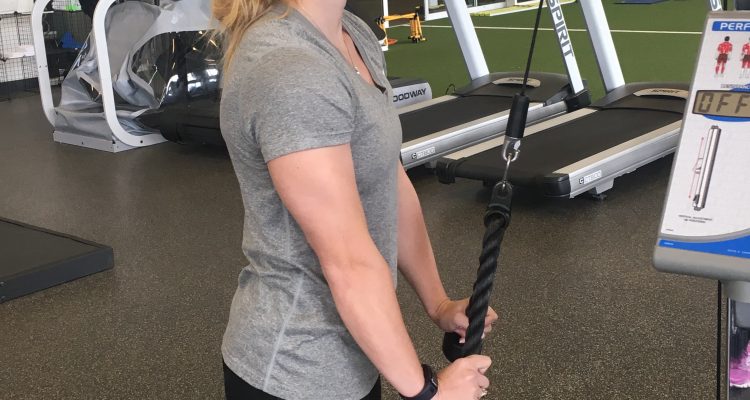The dreaded first step out of bed the morning after a tough practice, the pain of climbing up a flight of stairs the day following a brutal workout, and bracing as you slowly lower yourself to the toilet after a workout of heavy squats. We have all experienced the symptoms of delayed onset muscle soreness. But, why does muscle soreness occur? Is soreness a key for muscle growth and/or adaptation? And how much muscle soreness is too much?
How?
Delayed Onset Muscle Soreness (DOMS) is associated with unfamiliar, high-force muscular work and is expedited by eccentric actions (when the external load exceeds the muscle’s ability to actively resist the load, the muscle is forced to lengthen and tension is generated) (1). Individuals usually begin to notice the “soreness” 24 to 48 hours after a training session (i.e. delayed). Many theories have been tossed around as to why DOMS occurs, including: lactic acid, muscle spasms, connective tissue damage, muscle damage, inflammation, and enzyme efflux. The general consensus is that a single theory cannot explain the whole story; therefore researchers have proposed an integration of several theories. This integration theory suggests: high tensile forces, associated with eccentric exercise, damage muscle tissue and connective tissue initially (1, 2). This is followed by an acute inflammatory response consisting of edema (fluid) formation and inflammatory cell infiltration resulting in muscle pain/discomfort (1, 2).
Why?
The process and role of muscle damage elicited by high-force muscular work and eccentric contraction is vital for muscle adaptation to resistance training to occur. The cascade of events following a stressful training session, produce a number of substances that take part in the degeneration-regeneration of muscle. There are a few things regarding DOMS that you must know: if experiencing DOMS, there will be a reduction in your force output and joint range of motion for several days, alteration in muscle sequencing and recruitment patterns may occur, and the more trained you are the less DOMS you will experience (1, 2),
How much is too much?
As you can see from above, mild, muscle soreness is good and necessary for growth and adaptation. However, too much muscle soreness can mean something is not right. If muscle soreness begins during or immediately after a workout or activity, reduces your ability to complete daily activities, severely swollen limbs, or soreness persists for 3 or more days, this may be a sign you did too much. When beginning a new exercise program, always begin with lighter loads and progress slowly. If you’re thinking about quitting because of muscle soreness, try your best to work through the first few sessions without getting discouraged.
By: Lauren Higgins, M.S., CSCS, FMS-level 1
References
- Cheug, K., Hume, P.A., and Maxwell, L. (2003). Delayed onset muscle soreness: treatment strategies and performance factors. Sports Med, 33(2).
- Gardiner, P.A. (2011). Motor unit recruitment during different types of movements. In, Advanced neuromuscular exercise physiology (25-44). Champaign, IL: Human Kinetics.

